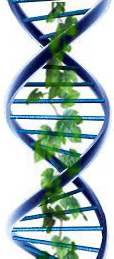

This is the current Blog in development. It is till in the process of written. I began this particular thought over 5 years ago and in typical fashion I hadn't gotten back to it. Here is where I write about my thoughts on many things, but also about my favorite kind of data analytics, Clinical and Healthcare analytics. Of course, all kinds of data and information analysis are fair game for discussion in keeping with my growing fascinations with Mathematics, Modeling and Simulation, Statistics and Data Mining.
I blog on Graphics and aerspace simulation and modeling at my Patreon site and more generally on any topics at my Substack site.So if my writings are of interest to you I can be followed on any of those platforms
It could even be considered that my Youtube Channel is my VideoLog, or Vlog, so you can join me there also.
You are on the most Recent Blog, You can go Back to the Earlier Blog page.
The only Models that can be real is the reality itself. At best ideologies are representations of the ideal or true goal of a journey we make with our mind.
I am going to venture a limitation on though which though arguable probably can't be proven wrong. That is that reality is too big to fit whole cloth into a human mind. Further as we are all very likely born to some degree a "tabla rasa", a blank slate, all indications are that we build our own reality from birth onwards.
Much has been studied to clarify what part of our conception of reality is inate or genetic or even remembers from some last visit to life - if that is a possible reality.By it's very nature, have no way to objectively or even scientifically sort this part of our reality out. But we do have models we build, hypotheses realy,that are build to be tested. Unfortunately it is too easy to lose touch with the hypothetical nature of the models.
Jung I think constructed the most complete and self consistent model of inate reality as the collective unconscious. He did this to provide a conceptual framwork based upon the commonaities of human behavior - dare I say the human experience.He was a scientist after all and stuck very closely to the method of the cycle of observation-hypothesis-testing-observation which is science.
The Buddha was an early builder of models of reality that influenced Jung as much as the Scientific method. But it is the aquisition of our models of reality under the influence of our parents and then our cultural milieu that completes the individual's concept of reality.The roleof modern science is to test all the concepts of reality against sharable observations and refine the model repeatedly.
Neuroscience in the 21st century has been pursuing the source of consciousness with varing amounts of open-mindedness. After all at this point in the human experience we spend as much effort testing the accumulated hypotheses that we inherited as we do accounting for the human experience we have een unable to incoprporate into current models. The biggest challenge to objectivity is this clinging to models still clearly inadequate to the task. COnsider not only the over riliance on faith of the lay thinker but the materialist's insistance that the center of consciousness can only be within the machine's mechanisms, electrically, chemiscally or anatomically or some combination therof.
I personnally take issue with the quantum school of consciousness because it is more a hypothesis of convenience than of observation. Often the rationale is taken that because the underlying structures of reality, the universe and all that is likely quantum in nature and the inherent weirdness of the universe and that of consciousness joins them together.Though convenient in that face of materialist's failure to find a convincing seat of consciousness the ineffability of quantum mechanics and it's obvious incompleteness (failure of sorts) to birth a righteous theory of everything.
So returning to models and model making, it is most urgent that we remind ourselves that the model of reality can never be reality unless it is reality itself.Anything else is an approximation and subject to evolution buy trial and error.In doing thus we do not reject the model out of hand but frame it as the step on the path to human enlightenment thatit is.
I once had a student who rejected all evidence that was not obtained by double blind controlled experimentation. He always came to grief with both teachers and piers as being denies learning from data that didn't arise from absolute truth. Truth is an iteratively gained boon which is by definition alway sought for and never fully attained.Dogma is the enemy of truth as it threatens the search with abandonment
Perhaps we do learn the truth at our death, but what good is that. That is just another rationale to stop searching and questioning. Since life is a constant search, it is it's own justification.
More to come.
1
2